Things to do in the great outdoors near Atlanta: Explore Georgia’s 3 Monadnocks
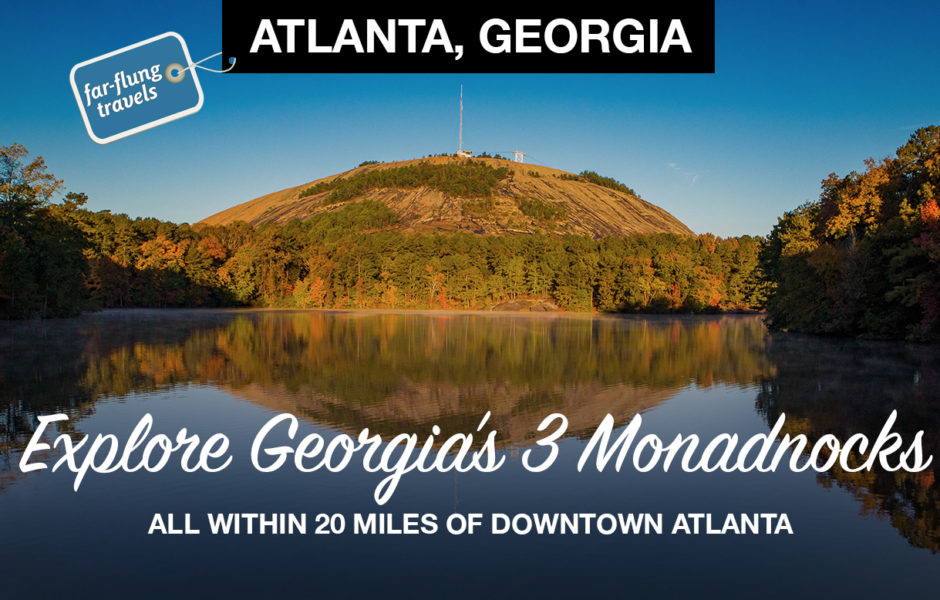
Looking for fun things to do in the great outdoors in Atlanta with your family or friends? The metro area is just a stone’s throw from three unique parks that feature mountains known as monadnocks.
Monad-WHAT???
A monadnock is a giant glob of hardened magma exposed over time by erosion and uplift caused by the shifting of tectonic plates millions of years ago. They get there name from a mountain in New Hampshire that was given the name “Monadnock” by the Abenaki ancestors that inhabited North America’s Northeast.
Among many famous poets who visited Mount Monadnock in New Hampshire, Ralph Waldo Emerson was inspired to put pen to paper.

He wrote:
“Up!—where the airy citadel
O’erlooks the purging landscape’s swell.
Let not unto the stones the day
Her lily and rose, her sea and land display;
Read the celestial sign!
Lo! the South answers to the North;
Bookworm, break this sloth urbane;
A greater Spirit bids thee forth,
Than the gray dreams which thee detain.”
Georgia’s 3 monadnocks
There are three monadnocks in Georgia and all of them are located within 20 miles east and southeast of downtown Atlanta: Panola, Arabia and Stone mountains.
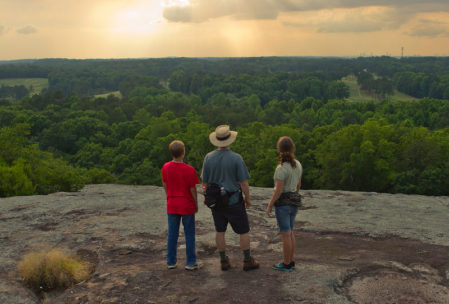
Panola Mountain State Park / Courtesy of Explore Georgia
Panola Mountain
Of the three mountains, Panola Mountain in Stockbridge, Georgia, is the most pristine and protected of the three monadnocks in the state. The 100-acre stone outcropping is designated a National Natural Landmark. In order to protect the rare flora and fauna, ranger-led guided hikes are required to access the peak, which rises 946 feet above seas level. Afternoon, half-day and Moonlight options are available. The rest of Panola Mountain State Park can be visited freely. Recreational activities include fishing, archery, geocaching and tree climbing.
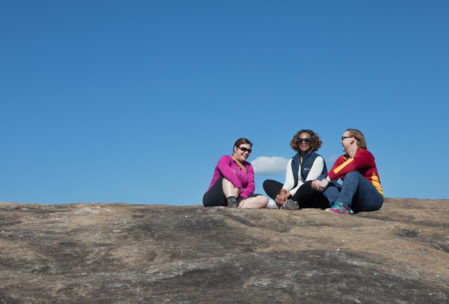
Arabia Mountain
Arabia Mountain
Arabia Mountain in Lithonia, Georgia, is the centerpiece of the Arabia Mountain National Heritage Area (one of three such designations in the state). While the mountain itself appears barren, the unique topography and geology has allowed for unusual plant and animal species to survive. It’s home to a bright-red diamorpha plant that lives in small pools of water that form on the monadnock. They germinate in the fall and bloom in early spring. Other flora include yellow daisies, reindeer moss, prickly pear and resurrection moss. The best way to learn about the natural features of the mountain is by taking a guided tour that leaves from the nature center every Friday and Sunday at 8 a.m.
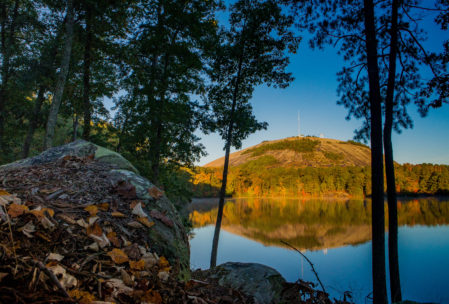
Stone Mountain as seen from Evergreen Marriott Resort.
Stone Mountain
Stone Mountain is the best example of a monadnock in Georgia. It’s widely considered to be the largest piece of exposed granite in the world, although experts say it’s actually made of quartz monzonite, which is similar to granite. The bald peak is one of Georgia’s seven natural wonders. It rises 1,683 above sea level and encompasses 583 acres of land.
The surrounding area was developed into a theme park that opened in 1965. Stone Mountain Park draws about four million visitors each year, making it Georgia’s most visited tourist attraction. It’s home to a LaserShow Spectacular, two championship golf courses, a campground and two Marriott hotels. And there are tons of family-friendly attractions, including: Stone Mountain Scenic Railroad, a full-size locomotive from the 1940s; the world’s largest electronic carillon with 732 bells, played live on the weekends by long-time carilloneur Mabel Sharp; a treetop canopy tour called SkyHike; Ride the Ducks, an amphibious tour of land and water; biking trails; kayaking in Stone Mountain Lake; hiking trails that take you to the top of Stone Mountain; and the Summit SkyRide, which makes the journey to the top or back down to the bottom a lot quicker.
One of the most polarizing features of Stone Mountain Park is the world’s largest bas-relief sculpture carved into the north face of the mountain. The carving, which is larger than Mount Rushmore in South Dakota, depicts three Confederate leaders in the Civil War: President Jefferson Davis and Generals Robert E. Lee and Thomas J. “Stonewall” Jackson (plus their favorite horses).
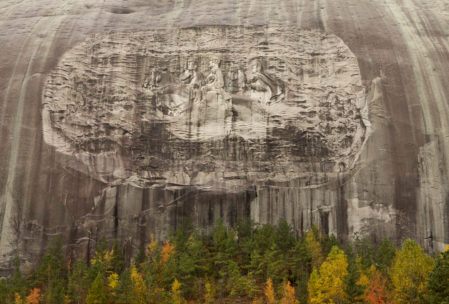
The confederate monument at Stone Mountain Park is the largest bas-relief sculpture in the world but it’s the subject of much controversy.
Work on the sculpture began around 1915 when the mountain was owned by a prominent family that was instrumental in reactivating the Ku Klux Klan. The summit of Stone Mountain was the location for an annual cross-burning ceremony that continued for nearly a half century.
Rev. Martin Luther King Jr. referenced Stone Mountain in his “I Have a Dream” speech saying: “Let freedom ring from Stone Mountain of Georgia.” On April 4, 2018—the 50th anniversary of King’s assassination—dozens of silver bells rang from the base of Stone Mountain in celebration of King’s legacy.
Despite efforts to heal the wounds of the past, the controversy surrounding confederate monuments throughout the country continue. In recent years, protesters have demanded the removal of Stone Mountain’s sculpture by sandblasting, while others believe it should remain as a lesson from the past.
No matter where you stand, it’s hard to ignore the imposing sculpture when you visit Stone Mountain; however it does create the opportunity for a healthy discussion about its historical significance and race relations in the United States.

Write a Reply or Comment